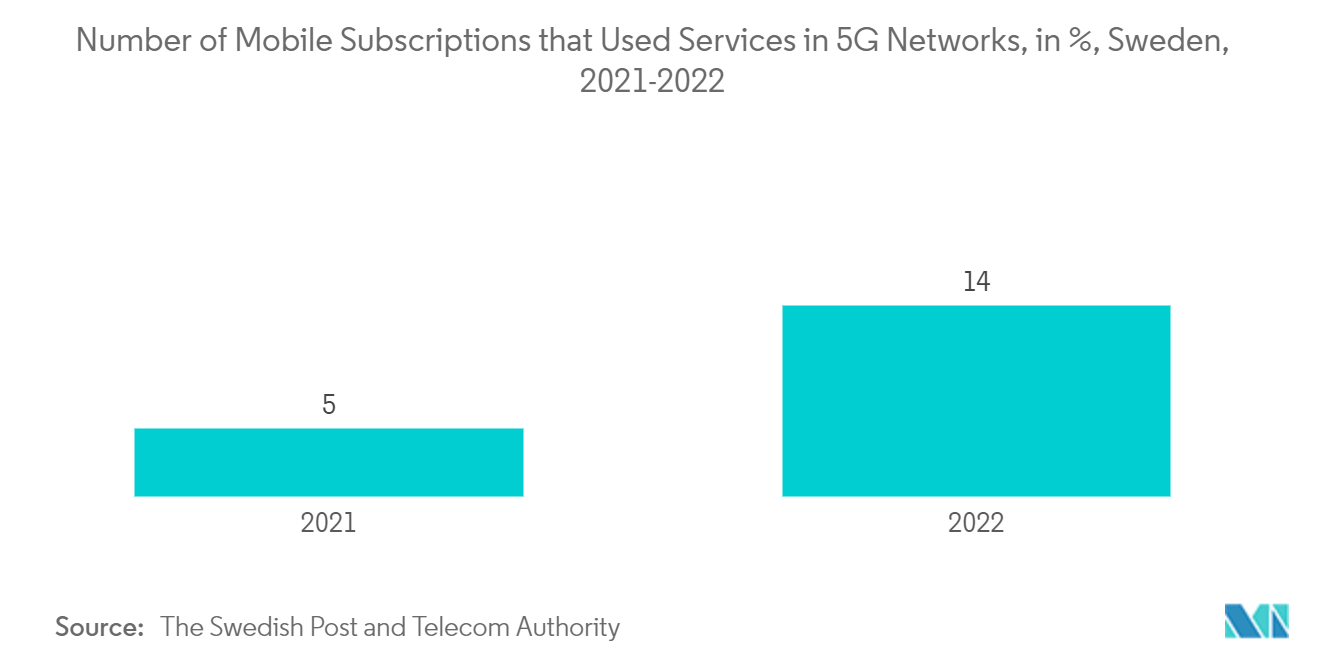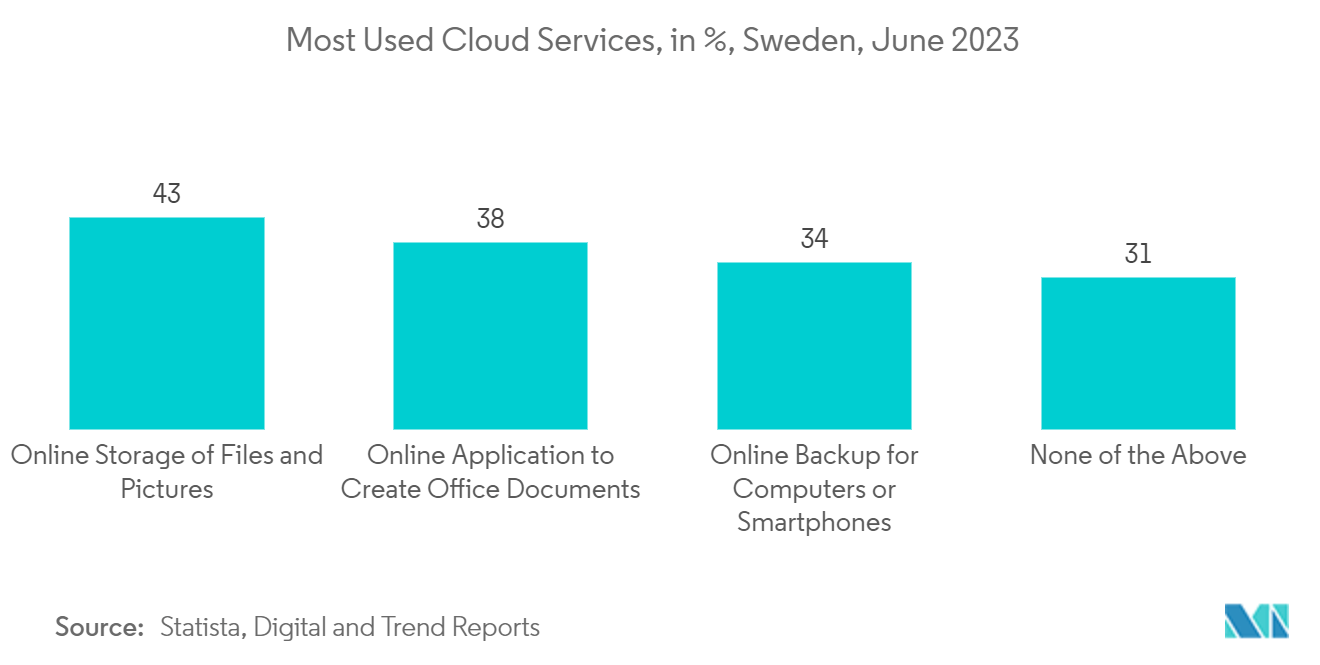Market Trends of Sweden Data Center Cooling Industry
IT and Telecom to Hold Significant Share
- In Sweden, data traffic in the mobile networks increased to 3,005 Pbytes in 2022, which was an increase of 28 percent. There were 12.4 million mobile subscriptions for both voice and data services (smartphones), an increase of 5 percent compared to the previous year. With increasing data traffic, the demand for data construction is increasing, which will increase the demand for cooling solutions.
- Sweden has the European Union's (EU) lowest power price, and much of that power is produced in local hydropower plants that guarantee highly reliable renewable energy.
- With a carbon footprint as low as 0.04 g CO2 per kWh, many telecom companies are migrating their data from expensive fossil-fueled economies to low-cost clean energy locations like Sweden, leading to market demand.
- The rapidly increasing 4G penetration and the upcoming 5G wave are further adhering telecom vendors to invest in the Swedish data center. Recently, Swedish network provider Net4Mobility, a joint venture between local carriers Tele2 and Telenor, announced plans to connect 90% of the nation's population to its 5G network by the end of 2023. Such developments are expected to result in increasing investments in data processing facilities.

Liquid Cooling to Hold Significant Growth
- Air cooling is just insufficient to sustain the dependability of IT systems in facilities with exceptionally high-density racks (usually over 30 kW), regardless of how new or optimized they may be. Liquid cooling is not an option but rather a must for such facilities (rack power requirements are approaching 20 kW in many facilities, and many companies are aiming to build racks with requirements of 50 kW or more). Facilities such as STHLM 4 of Conapto (Designrepublic.se) are under construction facilities having high rack density.
- A data center in Sweden has cut its energy bills by a million dollars a year using seawater to cool its servers; Interxion, a collocation company in the Netherlands that rents data center space in 11 countries, uses water pumped from the Baltic Sea to cool the IT equipment at its facilities in Stockholm.
- The Swedish data center region features free cooling. The direct evaporation of water is used to produce humidification with limited energy consumption. This simple, cost-effective method results in a 30 percent reduction in energy costs and 90 percent less water usage than other water-based cooling systems. To provide the needed water for the humidification at the datacenter, a rainwater harvesting method was developed to offset the demand for fresh water.
- The Swedish data center industry has begun to gain attractive investments from hyperscale cloud providers such as Google, Microsoft, and Amazon. In October 2022, Google Cloud announced plans for its first cloud region in Sweden to promote sustainable business transformation.


